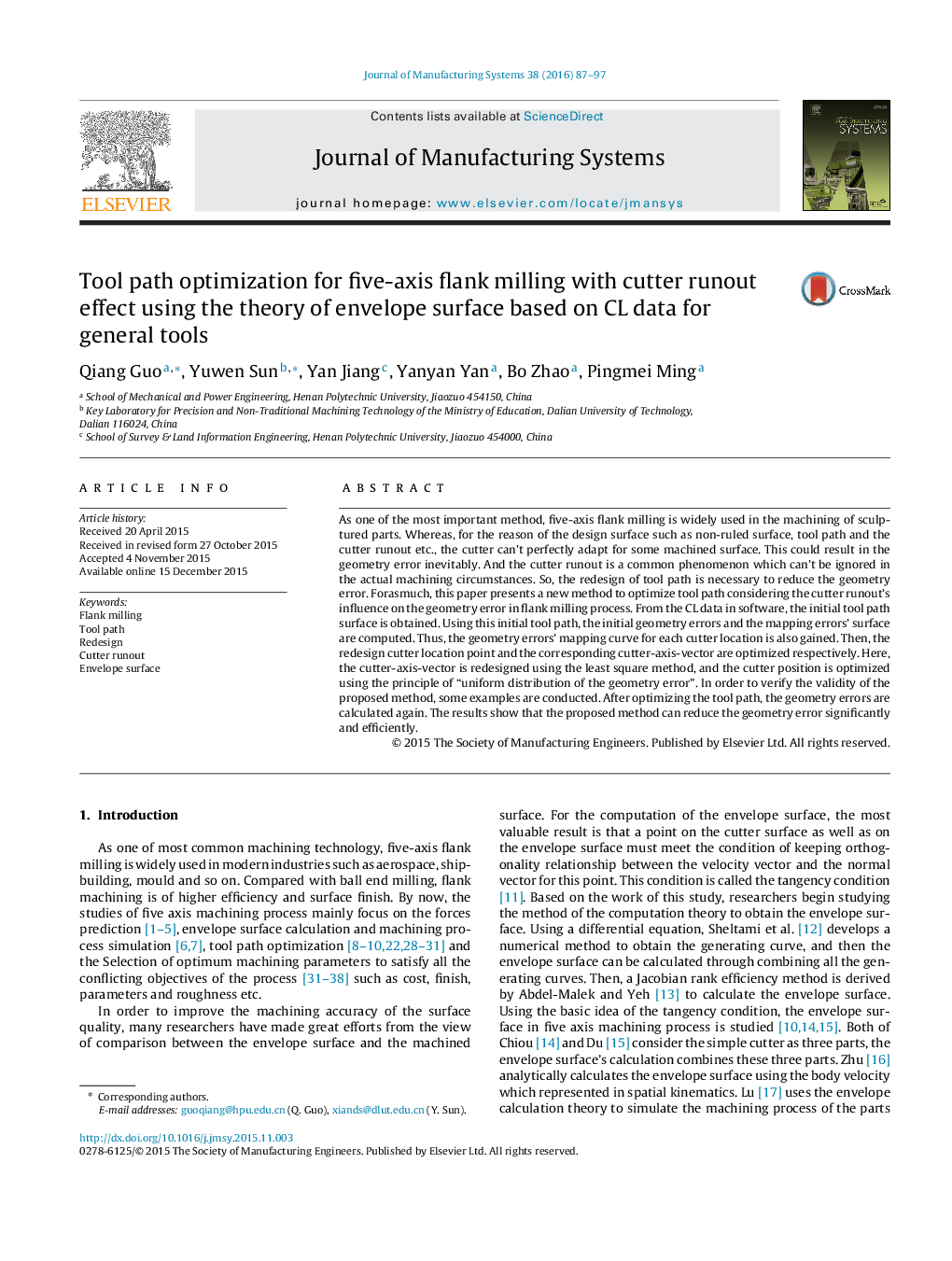| کد مقاله | کد نشریه | سال انتشار | مقاله انگلیسی | نسخه تمام متن |
|---|---|---|---|---|
| 1697380 | 1519253 | 2016 | 11 صفحه PDF | دانلود رایگان |

• Cutter runout is a common situation for five axis machining process.
• A new method is proposed to optimize tool path considering the cutter runout.
• The cutter position point and corresponding axis are optimized individually.
• Some examples are conducted to verify the method.
As one of the most important method, five-axis flank milling is widely used in the machining of sculptured parts. Whereas, for the reason of the design surface such as non-ruled surface, tool path and the cutter runout etc., the cutter can’t perfectly adapt for some machined surface. This could result in the geometry error inevitably. And the cutter runout is a common phenomenon which can’t be ignored in the actual machining circumstances. So, the redesign of tool path is necessary to reduce the geometry error. Forasmuch, this paper presents a new method to optimize tool path considering the cutter runout's influence on the geometry error in flank milling process. From the CL data in software, the initial tool path surface is obtained. Using this initial tool path, the initial geometry errors and the mapping errors’ surface are computed. Thus, the geometry errors’ mapping curve for each cutter location is also gained. Then, the redesign cutter location point and the corresponding cutter-axis-vector are optimized respectively. Here, the cutter-axis-vector is redesigned using the least square method, and the cutter position is optimized using the principle of “uniform distribution of the geometry error”. In order to verify the validity of the proposed method, some examples are conducted. After optimizing the tool path, the geometry errors are calculated again. The results show that the proposed method can reduce the geometry error significantly and efficiently.
Journal: Journal of Manufacturing Systems - Volume 38, January 2016, Pages 87–97